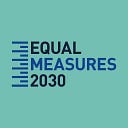How to influence global policy: 10 lessons from the women’s movement
By Amanda Lundy, Head of Policy and Advocacy at Equal Measures 2030
Thanks to years of intensive advocacy by the global girls’ and women’s movements, the Global Goals adopted by the world’s governments in 2015 include a stand-alone goal on achieving gender equality. In addition, there is a recognition throughout all 17 goals that girls’ and women’s rights, welfare and health are essential to achieving the entire 2030 agenda.
This groundbreaking result has renewed the hope that, if implemented successfully, the new agenda can and will transform the lives of girls and women all over the world.
Equal Measures 2030, an independent civil society and private sector partnership, is committed to doing our part: ensuring that girls’ and women’s rights advocates at the local level can access and use compelling data on the progress of girls and women to hold their governments to account for action on the Global Goals.
A new report from the International Women’s Health Coalition, a partner in Equal Measures 2030, looks back to the experience of the girls’ and women’s movements during the Global Goals negotiations and outlines what we can all learn from this successful advocacy. Power Lessons: Women’s Advocacy and the 2030 Agenda explores what the women’s movement achieved, which strategies were most successful, and what was learned from the process.
Here are ten lessons from the report that activists can use when engaging in global political processes to shape policy agendas:
- Build a transparent and inclusive method of working: Efforts were built on a commitment to transparency and inclusivity: tactics included bringing advocates from around the world to New York, organizing strategy meetings, and using social media to keep people informed and engaged.
- Work across issues: Activists broke out of their “silos”, learning from each other and building on their expertise, in order to successfully influence the 2030 Agenda.
- Organize early, prioritize demands and develop unified positions: Work began more than three years before the Agenda was set to be finalized, with advocates organizing to identify priorities, develop unified positions, produce position papers and clear messages, and analyze advocacy opportunities.
- Find champions and build relationships: A crucial step was identifying governments and individuals within the United Nations who shared their views on specific issues.
- Deliver clear and consistent messages and put persistent pressure on governments: Using their technical expertise, advocates provided specific language on a wide range of issues to government mission staff in ways that they could then use in negotiations. They were also tenacious in putting consistent pressure on governments to respond to their demands.
- Utilize innovative and visible communications strategies: Advocates made their presence seen and felt by deploying tactics such as public presentations and events, visual messaging and social media.
- Fund participation of advocates, especially from the Global South: To avoid limiting participation to those in New York or with the means to get there, the women’s movement raised funds for activists from social movements in the Global South to come to New York for the negotiations.
- Utilize existing structures and opportunities: Advocates saw the Women’s Major Group as a way to bring together women from all over the world into an existing mechanism that allowed access to the process and could be expanded to suit the task at hand.
- Identify gaps in expertise and build capacity (e.g. financing): Women’s rights activists faced a number of challenges, both their own limitations, such as a gap in expertise on financing, and external obstacles, such as the lack of funding and fierce political opposition.
- Link global advocacy to national advocacy and strengthen the movement at every level: The evaluation reinforced an idea that Equal Measures 2030 holds dear: that the ambitious goals of the 2030 Agenda will only be realized and make a real difference for girls and women if organizations at local, national, and regional levels have the support to hold their governments accountable.
Read IWHC’s full report here.
